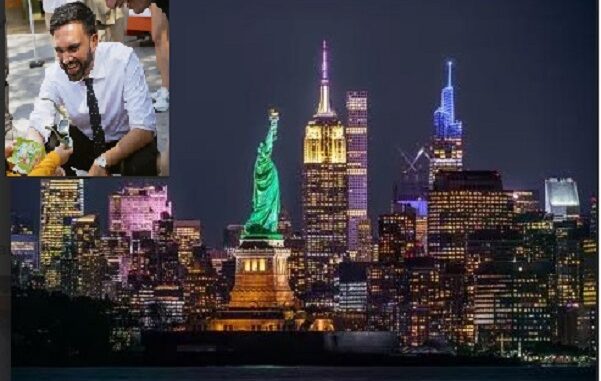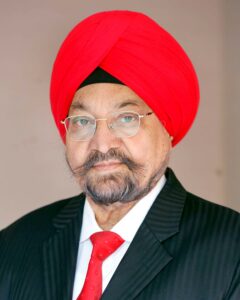
Mamdani’s promises speak to a deep hunger for change. But unless he and his campaign begin to share detailed, actionable, and financially viable plans, these promises risk becoming yet another chapter in New York’s long book of political disillusionment.

In a city as iconic and vibrant as New York, promises from political candidates are often met with both enthusiasm and skepticism. The Democratic mayoral nominee, Zohran Mamdani, has captured the imagination of many with a progressive platform that promises to transform New York City into a more affordable, equitable, and livable space for all. His ambitious agenda includes raising the minimum wage to $30 per hour, providing free bus rides citywide, ensuring juice for children in public schools, and launching sweeping infrastructure and cleanliness reforms. These pledges have excited many working-class residents, youth groups, and progressive voters who are weary of rising rents, stagnating wages, and decaying public services.
But amid the applause lies a pressing question: can these promises actually be fulfilled? With the city grappling with chronic fiscal constraints, rising crime, decaying infrastructure, and persistent urban blight, New Yorkers are right to demand clarity and realism. Can Mamdani’s vision be more than campaign rhetoric? Or are these bold declarations just the sweet music of electoral populism?
The $30 Minimum Wage: Economics or Election Slogan?
One of Mamdani’s most headline-grabbing promises is his commitment to raise the minimum wage in New York City to $30 per hour—nearly double the current minimum wage of $16/hour, which was implemented in 2024 under a state mandate. At first glance, this sounds like a dream for low-wage workers, especially those in retail, hospitality, and the gig economy, who have long struggled to meet the city’s ever-increasing cost of living.
But the economic implications are profound. According to the New York State Department of Labor, there are approximately 3.8 million workers in the city, of which about 1.2 million earn less than $30/hour. To elevate all of them to the proposed wage would require massive adjustments from private employers—many of whom are still recovering from the post-pandemic economic disruptions and inflation shocks. Small businesses, in particular, could be crushed under such a wage mandate, leading to layoffs, business closures, or relocation to other states.
More importantly, wages are not solely determined by political will; they are tightly bound to productivity, profit margins, and market dynamics. Without significant subsidies or tax relief to offset these costs, this promise, while noble, could backfire on the very workers it aims to uplift.
Free Bus Rides: A Transit Dream That Needs a Budget
Another key promise is free bus service across New York City, an initiative aimed at promoting equity in transit access, reducing car dependency, and alleviating the burden on working-class commuters. New York City Transit runs approximately 5,700 buses serving more than 300 routes, carrying over 2 million passengers per weekday.
Currently, the Metropolitan Transportation Authority (MTA) faces a budget shortfall of nearly $2.5 billion over the next few years, despite receiving federal aid during the pandemic. Free bus service would add hundreds of millions in lost fare revenue annually—estimated at $800 million according to MTA’s latest financial reports.
If the city or state does not provide a dedicated funding stream—such as new congestion pricing tolls, higher taxes on the wealthy, or increased federal grants—such a plan is unlikely to be sustainable. As appealing as “free buses” sound, transportation experts warn that without adequate funding, the quality of service—frequency, maintenance, driver salaries—could collapse.
Juice for Schoolkids and Other Populist Promises
Mamdani’s pledge to provide free juice for children in public schools may seem trivial in scale compared to wage hikes and transit reform, but it symbolizes a broader political messaging style—populist, emotive, and symbolic. While such a program might cost just a few million dollars annually, it raises a broader concern: how many similar small-ticket promises are being made without clarity on funding or execution?
New York City’s public school system serves approximately 920,000 students. Even a basic nutrition expansion program, including juice or snack supplementation, requires coordination with food vendors, health compliance, logistics, and recurring budgeting—none of which are currently detailed in Mamdani’s policy outline.
Law and Order: A Crisis Ignored?
While the nominee’s focus has been on affordability and social equity, many residents point to a rapidly deteriorating law-and-order situation as the most pressing issue in the city today. NYPD staffing has been cut drastically in recent years—from 36,000 uniformed officers in 2020 to about 32,500 in 2025—partly due to budget cuts and partly in response to calls for police reform following mass protests.
Yet the reality is sobering. According to NYPD crime statistics, felony assaults rose by 11% in 2024 compared to the previous year, and property crimes increased by 9%, including widespread retail thefts and subway violence. Public confidence in safety, especially among elderly residents, women, and small business owners, has sharply declined.
If the city is to be made truly “affordable,” it must first be safe. No amount of free bus rides or wage raises will be meaningful if New Yorkers feel unsafe on the streets or in the subways. Mamdani’s campaign has so far not outlined a clear public safety strategy—raising fears that crime will worsen under an administration focused more on slogans than security.
A Crumbling Cityscape: Potholes, Trash, and Concrete
Beyond wages and law enforcement, the very physical state of New York City is a daily frustration for its 8.3 million residents. Roads are cracked and riddled with potholes. Public housing units are in disrepair. Litter clogs sidewalks. According to NYC’s Department of Sanitation, the volume of trash complaints has increased by 18% since 2023. The problem worsens in outer boroughs like the Bronx and Queens, where waste collection has been deprioritized.
Meanwhile, green cover remains poor. Beyond Central Park and a handful of city-maintained green belts, most neighborhoods look like concrete jungles. Tree canopy coverage, according to the NYC Parks Department, has fallen to 21%, down from the city’s goal of 30% by 2025. Residents in low-income neighborhoods face higher heat indexes due to this lack of greenery, exacerbating climate inequality.
While Mamdani promises to “revitalize” the city, few specifics have been shared. What’s the budget for green renewal? How will sanitation be improved in areas with underfunded services? Where will the investment in roads, bike lanes, and pedestrian infrastructure come from?
Fiscal Realities: Where Will the Money Come From?
Perhaps the biggest elephant in the room is this: how will all of this be paid for? The city’s 2025 operating budget stands at $112 billion, and it is already stretched thin across schools, police, sanitation, housing, and healthcare. The city also faces a looming pension burden and debt repayments nearing $6 billion annually.
Mamdani has vaguely gestured toward taxing the rich, ending corporate subsidies, and redirecting funds from NYPD to social programs. But these are not new ideas—and they’ve already been met with stiff political and legal resistance in Albany and beyond. Moreover, wealth taxes are largely state-level powers and cannot be unilaterally imposed by the city government.
There is also the question of private capital flight. Over the past five years, over 350 financial firms have either downsized or relocated from New York, citing high taxes and crime. If the tax burden grows heavier, the trend could accelerate, further eroding the city’s tax base.
New Yorkers Demand Real Plans, Not Just Poetic Promises
To be clear, Mamdani’s campaign is inspiring for many, especially those disillusioned by decades of establishment politics. His message resonates with younger voters, communities of color, and workers exhausted by rising rent, stagnant wages, and urban decay. But inspiration is not a substitute for implementation.
New Yorkers are asking: where is the blueprint? Where is the spreadsheet that matches spending with revenue? Where is the timeline? Where is the team that will ensure these ideas are realized in a city as complex and politically fragmented as New York?
City governance is not a Broadway production. It demands not just slogans, but spreadsheets; not just rhetoric, but roadmaps.
New York City is at a critical juncture. It is both a symbol of global aspiration and a city burdened with deeply entrenched problems. The next mayor—whoever he or she may be—must lead with both vision and realism.
Mamdani’s promises speak to a deep hunger for change. But unless he and his campaign begin to share detailed, actionable, and financially viable plans, these promises risk becoming yet another chapter in New York’s long book of political disillusionment.
As one lifelong resident put it: “Give us fewer dreams. Give us more answers.”
(Author is the chief editor of The Indian Panorama. He can be reached at salujaindra@gmail.com)




Be the first to comment